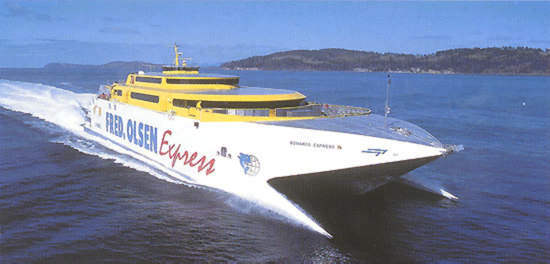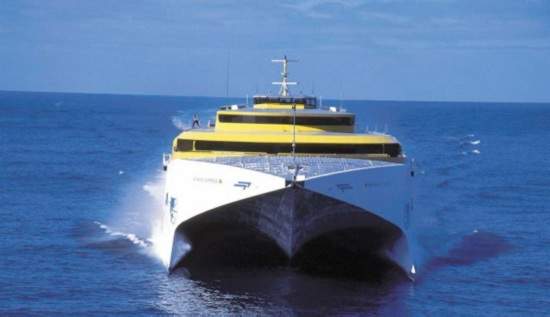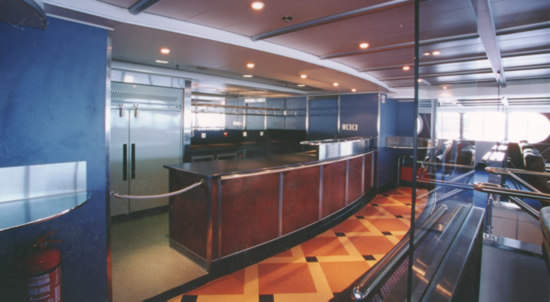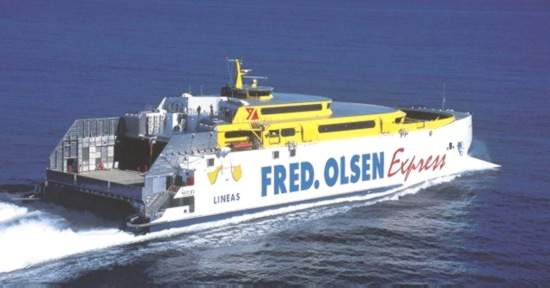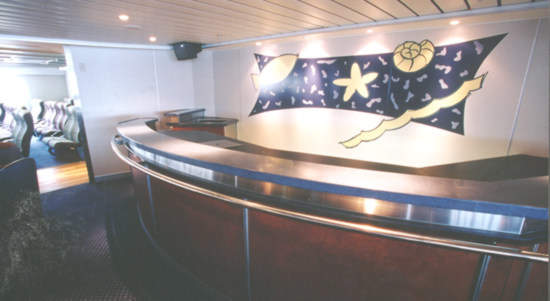Bonanza Express is the second 96m long wavepiercer to be built at Incat’s yard in Tasmania, Australia. The vessel was constructed at the builder’s Prince of Wales Bay catamaran building facility near Hobart, and was the 27th wavepiercer catamaran passenger vehicle ferry to be built by the company.
Bonanza Express is a close sister to Incat’s first dedicated ro-ro passenger (ropax) fast ferry, the 96m Devil Cat, now renamed Top Cat. She is registered in Santa Cruz and was built to meet the standards of Norwegian classification society, Det Norske Veritas.
The vessel gives new form to Incat’s bid to raise the stakes in the freight carrying sector. The yard has plans to extend its facilities on Prince of Wales Bay to allow it to build twin-hulled ropax and trailer ferries of up to 120m in length.
Bonanza Express entered service in the Canary Islands off the north west African coast in April 1999. She was bought for operation by Lineas Fred Olsen and represented an investment of around $45m, according to the operator.
Fred Olsen operates five routes in the Canaries using a fleet of four conventional ferries that provide a variety of passenger and cargo capacities. Deployment of the Bonanza Express is the first part of a modernisation plan, and represents a milestone in the Norwegian group’s 25-year presence in the Canary Islands.
Annually, the company carries more than two million passengers, 325,000 cars and over 75,000 freight vehicles.
The vessel has reduced transit times from two and a quarter hours to one hour on the 35nm route between Santa Cruz of Tenerife and Agaete, on the island of Gran Canaria.
Design
Bonanza Express has an open foredeck and stern in keeping with its Car Ferry B categorisation. This ensures that the vehicle decks receive the required amount of ventilation.
The vessel is able to accommodate a mix of light and heavy road freight, such as 24 trucks plus 85 cars, or a dozen freight vehicles and 180 cars.
While the maximum deadweight of 800t underpins the freight intake capacity, the provision of moveable mezzanine vehicle decks allows the ship to offer the necessary lane metres required for maximum car loading, as well as the requisite headroom for commercial vehicles.
The flexible nature of loading options is critical, and the lightweight honeycomb aluminium mezzanine deck can be lifted to optimise the garage space for trucks.
The vessel is designed to carry a total of 755 passengers, which is 155 more than its predecessor in the series. Bonanza Express features an enlarged ‘skylounge’ to accommodate the extra passengers, as well as the saloons, seating areas and bar featured in its near sister, the Devil Cat.
Her principal dimensions are: an overall length of 96m, an overall beam of 26m and a draught of 3.7m. The hull itself at the waterline is 86.3m long, with a beam of 4.5m.
Propulsion
Propulsion power is provided by four Ruston Paxman Diesels 20RK270 engines, each developing 7,080kW at 1,030rpm, and driving a steerable Lips 150D waterjet through a Reintjes VLJ6831 gearbox.
One of the vessel’s prime features is the ability to transport light and heavy road vehicles at high speeds. The vessel was able to record a maximum speed of 48k in lightship conditions, however, on trials with a high load, she averaged 42.85k at 630t deadweight. For registration purposes, her service speed is given as 37.5k at 800t deadweight.

